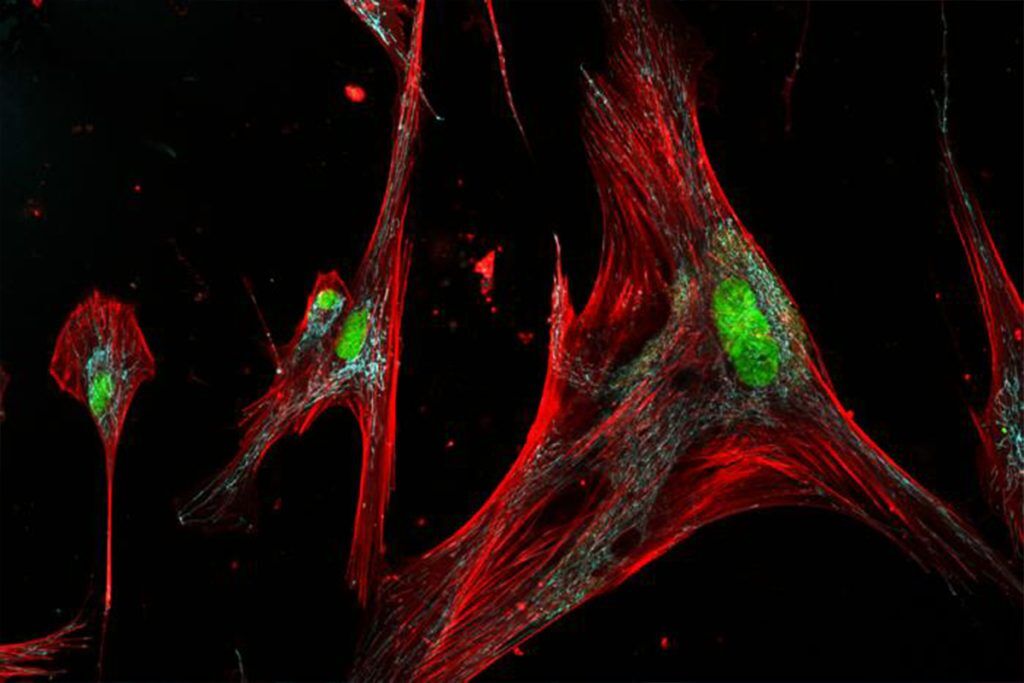
ZyVersa’s inflammasome inhibitor shown to address key hallmarks of Parkinson’s disease pathology – inflammation and protein misfolding.
A new paper published this week in npj Parkinson’s Disease highlights the therapeutic potential of ZyVersa Therapeutics’ lead investigational drug in addressing the underlying mechanisms that contribute to the progression of Parkinson’s disease. The preclinical study demonstrates that IC 100, the company’s humanized IgG4 monoclonal antibody, effectively inhibits the inflammasome adaptor protein ASC, a critical component in the inflammatory cascade that is activated in Parkinson’s disease.
Inflammasomes are molecular complexes that initiate innate immune responses when triggered by internal or external stressors. Central to this response is ASC, which polymerizes into filamentous structures known as ASC specks. These specks ultimately catalyze the production of pro-inflammatory cytokines and induce pyroptotic cell death. This inflammatory cycle, when uncontrolled, perpetuates damage in surrounding neuronal tissues.
Parkinson’s disease is characterized by progressive neurodegeneration driven by chronic inflammation and the accumulation of alpha-synuclein protein aggregates. In Parkinson’s disease, ASC and alpha-synuclein aggregates are found together in the midbrain, particularly within the dopaminergic neurons and glial cells. This colocalization creates a feedback loop where ASC specks promote alpha-synuclein aggregation, which in turn sustains inflammasome activation, leading to chronic neuroinflammation and neurodegeneration.
The study found that ASC specks isolated from Parkinson’s patient brains triggered inflammasome activation and cell death in human microglial cells – an effect that IC 100 was able to block. By neutralizing extracellular ASC, IC 100 appears to break the cycle of alpha-synuclein aggregation and inflammasome activation in neighboring cells, addressing both inflammation and protein misfolding – two hallmarks of Parkinson’s disease pathology.
The researchers reported that treatment with IC 100 of a mouse model genetically engineered to overexpress human alpha-synuclein, resulted in improved motor function, reduced markers of neuroinflammation such as microgliosis and astrogliosis, and preserved dopaminergic neurons in the substantia nigra. Notably, IC 100 was shown to cross the blood-brain barrier and was detectable in cerebrospinal fluid, supporting its potential as a centrally acting therapeutic.
“These are the first data to link ASC speck assembly, NLRP1 inflammasome activation, and alpha-synuclein aggregation in neurons of Parkinson’s disease patients,” said ZyVersa CEO Stephen C Glover. “IC 100, which unlike NLRP3 inhibitors, targets ASC, ASC specks, and multiple types of inflammasomes, blocked microglial NLRP1 inflammasome activation and reduced alpha-synuclein accumulation. These results strengthen our belief in IC 100 as a potential disease-modifying therapy for Parkinson’s, and we’re preparing to initiate proof-of-concept studies in animal models later this year.”
The study was conducted by researchers at the University of Miami Miller School of Medicine, supported by a grant from the Michael J Fox Foundation, and suggests broader implications for IC 100 beyond Parkinson’s.
“Our findings demonstrate that targeting inflammasomes and ASC specks may be a promising approach not only for PD but also for Lewy body dementia (LBD) and Alzheimer’s Disease,” said the study’s lead author, University of Miami professor Robert W Keane. “IC 100’s mechanism, which uniquely inhibits both ASC speck activity and misfolded protein aggregates, makes it a strong candidate for treating neurodegenerative diseases.”
Photograph: Image-Source/Envato
#Study #finds #inflammationtargeting #drug #Parkinsons #potential

